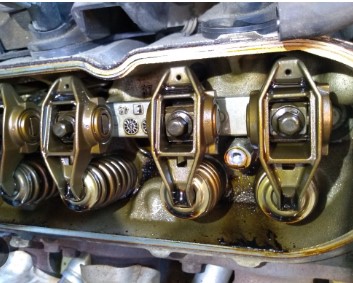The Vortec 5.3L V8 LMG engine boasts cylinder heads with distinctive “cathedral” shaped intake ports that optimize airflow, delivering superior performance at both high and low RPMs. However, a persistent issue that many consumers face dread cracked cylinder head. This problem may avoid with a keen eye for the initial signs and symptoms. In this article, we will delve into the telltale indicators that your 5.3 Vortec Cracked Cylinder head requires immediate attention.
Contents
Identifying the 5.3 Vortec Cracked Cylinder Head
One of the most conspicuous signs of a cracked cylinder head in the Vortec 5.3L V8 LMG engine is the emission of white smoke from the vehicle’s tailpipe. The cylinder head houses oil, and a crack can result in oil leakage, leading to misfires – a clear symptom of a Vortec cracked head.
Symptoms of a 5.3 Vortec Cracked Cylinder Head
Let’s explore other significant symptoms that will help you identify when your 5.3 Vortec head necessitates a thorough inspection, repair, or replacement.
1. Reduced Engine Performance
A noticeable decline in engine power is one of the most prevalent symptoms. The engine may run sluggishly and roughly, particularly during acceleration, uphill driving, or while towing, constantly losing power.
2. Oil Leakage
Given that the cylinder head houses oil, a crack can lead to oil leakage. An illuminated oil pressure warning on your dashboard is a clear indicator of low oil pressure. Inspect the area around the cylinder head under the hood for the presence of engine oil. If no oil is found, consider other potential causes for the oil leak.
3. Coolant Leakage and Overheating
In addition to oil, a severely cracked cylinder head can result in coolant leakage, causing the engine to overheat. However, coolant leaks can also stem from internal issues. Keep a close eye on your coolant levels and cease driving if you detect a coolant leak or a noticeable drop in the coolant level.
4. Emission of Engine Head Smoke
In cases of severe cracks, white smoke can emerge from the engine. This can be attributed to either a coolant or oil leak. When leaked oil or coolant enters the engine’s combustion chamber, it produces smoke.
5. Engine Misfire
Successful combustion in an engine requires three key elements: a proper spark, the correct air-to-fuel ratio, and adequate compression. A severely cracked cylinder head can lead to a mixture of oil and gases in the combustion chamber, hindering proper combustion and causing engine misfires.
These are the most commonly identified symptoms that point to a Vortec cracked head. If your vehicle is equipped with a Vortec 5.3L V8 LMG engine, it’s essential to keep these signs in mind.
Dealing with a 5.3 Vortec Cracked Cylinder Head
Should you encounter any symptoms indicating damage to your 5.3 Vortec head, follow the guidelines below to address the issue.
Replacing the cylinder head isn’t always necessary when dealing with a crack. Repairing a crack, while carrying some risks, is typically more cost-effective than replacement. The 5.3 Vortec engine’s cylinder head construct from cast aluminum. Most small cracks in this cylinder head can fix through pinning, while larger cracks require TIG (Tungsten Inert Gas) welding.
Pinning, primarily used with cast iron heads, can also be employed for repairing aluminum. It is a relatively straightforward technique, requiring only a drill, a guide fixture, and a tap. The process involves drilling holes at both ends of the crack to prevent it from spreading and filling the crack by installing overlapping pins. Whether to use tapered or straight pins depends on the situation, with sealer generally used when employing straight pins.
For more extensive or thinner cracks, TIG welding is the preferred repair method for cast aluminum, as it prevents the formation of aluminum oxide that can contaminate the welding. Welding involves melting the surrounding area and filling the crack with molten metal and a filler rod. Proper preparation of the crack, which includes grinding and cleaning, is essential for a durable repair.
After welding, it’s crucial to let the head cool down gradually. This can be achieved by returning the head to the oven or wrapping it in an insulating blanket. Failing to do so can lead to cracks in the welded area.
The Cost of Replacing a Vortec 5.3 Cylinder Head
Unfortunately, replacing the cylinder head is a relatively expensive endeavor. Continuing to operate with a cracked head will likely exacerbate the issue and result in more coolant loss. Timely detection can significantly reduce the associated costs.
The estimated expense for replacing a Vortec 5.3 cylinder head typically ranges from $800 to a maximum of $1,000.
Final Thoughts
Cylinder heads are a crucial component of your vehicle’s engine, facilitating fuel combustion and managing airflow. While they can succumb to cracks due to extreme pressure, vigilance and knowledge of common symptoms can help mitigate damage. Keep an eye on these signs, and you’ll be better equipped to address any issues that may arise.
You may also read:
